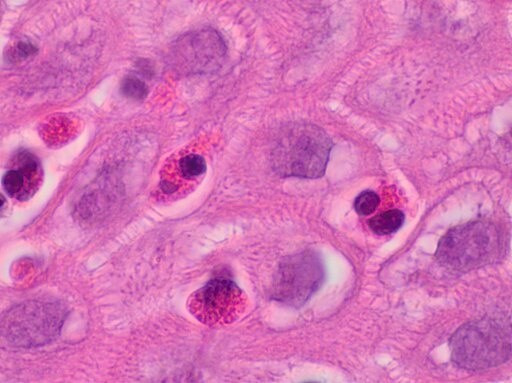The upper gastrointestinal tract comprises hollow organs through which food passes for digestion. In one of these organs, the esophagus, a little-known inflammatory condition affecting more and more people in recent years.

What is Eosinophilic Oesophagitis?
The esophagus is the muscular food pipe that connects the mouth to the stomach. Typically less than a centimeter wide when relaxed, this tubular organ can stretch more than three times its width to accommodate large pieces of food. According to gastroenterologist Stephen Attwood, swallowing a big chunk of solid food that measures 2.5 centimeters is normal. The stretchiness of the esophagus allows it to open and let food pass through.
For some people, the lining of the esophagus becomes chronically inflamed, making the food pipe becoming stiff, swollen, and unable to stretch. This condition also causes the hollow tube to be prone to food blockages.
This health condition is brought by an excessive immune reaction caused by specialized white blood cells called eosinophils. These cells are needed by our body to help eliminate harmful gut bacteria and parasites. However, the immune system sometimes becomes miswired and triggers allergic reactions and eczema.
Increasing Incidence of Eosinophilic Oesophagitis
Eosinophilic oesophagitis (EoE) was first identified by Attwood in the late 1980s, when it was vanishingly rare, with estimated rates of less than 10 per 100,000 people. However, like food allergies mediated by eosinophils, eosinophilic oesophagitis has become increasingly common in all age groups. It can affect young children and adults over 70 for reasons experts do not fully understand.
Data from the British Society of Gastroenterology reveals that eosinophilic oesophagitis currently affects about 63 in 100,000 individuals. This figure is sufficient to classify the condition as a "common disease technically."
In 2022, a research entitled "Increasing incidence of eosinophilic esophagitis in Sweden: a nationwide population study" suggested that eosinophilic oesophagitis can affect more than a thousand people. Attwood noted that it is the highest current estimate, although it fits entirely with what experts see in daily practice. Health experts are diagnosing it more frequently since more and more patients need assessments for this swallowing difficulty.
Allergy dietitian Hannah Hunter from Guy's and St. Thomas' NHS Foundation Trust explains the cause of the alarming rise. She points to various theories about asthma, hay fever, allergy, and eczema.
One of these theories is the hygiene hypothesis, which attributes the rise of eosinophilic oesophagitis to modern cleanliness. It suggests that the current sanitary habits result in fewer childhood infections to train the immune system, making it more susceptible to becoming awry. Another plausible explanation is the prolonged exposure of sensitive cells to modern diets and common chemicals like detergents and pesticides.
Hunter also noted that there had been a genuine rise in cases that remained purely by increased awareness. Some theories include low vitamin D, less exposure to microorganisms, and more highly processed foods like preservatives, emulsifiers, additives, and sweeteners.
While eosinophilic oesophagitis is rising, awareness among many general practitioners is limited. It has been reported that it takes an average of six years for patients to be diagnosed correctly. If left for many years without receiving appropriate treatment, the inflammatory disease can advance to the point where the patients will develop thick scarring in their esophagus. As a result, they will find it hard to eat normally or even swallow a small tablet.
RELATED ARTICLE : Ibuprofen, Naproxen, and Other Painkillers Can Aggravate Arthritis Inflammation, New Study Reveals
Check out more news and information on Inflammation in Science Times.
© 2025 ScienceTimes.com All rights reserved. Do not reproduce without permission. The window to the world of Science Times.











